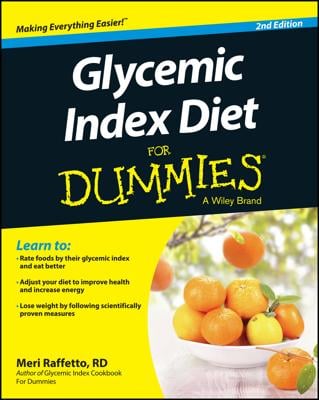People who are starting a low-glycemic diet have a love/hate relationship with grains. Many popular grains have a high glycemic index (fluffy mashed potatoes, creamy white rice, pasta with grandma’s secret sauce, and macaroni and cheese) — but you can incorporate several lower-glycemic grains in your meals.
Grains, especially whole grains that are less processed, provide a variety of nutrients your body needs for good health. Many of the grains that are new to modern society were very familiar to our ancestors. The best part about these new old favorites is that you can easily add them to your favorite recipes, especially in foods such as hot cereals, soups, and rice pilaf dishes.
Some lower-glycemic oldie-but-goodie grains include:
Spelt is an ancient variety of wheat that was common until industrialization made it less favorable to farmers than other types of wheat. (People who can’t handle wheat should avoid spelt because it’s part of the wheat grain family.) Spelt has a higher protein, B vitamin, potassium, and iron content than other varieties of wheat, giving it a nutritional edge. Multigrain bread made with spelt flour has a glycemic index of 54, making it a lower-glycemic bread choice.
Substitute spelt flour for wheat flour in recipes for cakes, cookies, muffins, pancakes, and even bread. Spelt-flour breads don’t rise as high as other wheat-flour breads because spelt has a lower gluten content, yet they can produce a delicious bread product in their own right.
Spelt flour doesn’t require as much water as other types of wheat flour; start by using three-fourths of the required liquid in a recipe.
Buckwheat, familiar in the form of Japanese soba noodles and Russian kasha, actually isn’t a form of wheat — it’s really a relative of rhubarb! Yet buckwheat, which has a low glycemic index, traditionally has been used as a grain in cooking. Because it’s not a member of the grain family, people who can’t tolerate wheat can use it without concern. Buckwheat is also available as groats, which are the light-brown or light-green soft inner seeds of buckwheat. You can add whole groats to soups, or you can boil them and eat ’em like rice.
Try using 50 percent buckwheat flour and 50 percent wheat flour in pancakes, muffins, biscuits, and breads for a richer flavor.
Quinoa was originally cultivated by the Inca in the Andes Mountains of South America. It looks like small kernels of rice and has a higher protein content than many other types of grains. It contains no gluten and can be safely used by people with wheat allergies. Quinoa is delicious in soups and grain salads, and it has a lower glycemic index of 53.
Try using a mixture of 25 percent quinoa and 75 percent wheat flour in breads, biscuits, and muffins for a highly nutritious bread product with a delicious taste.
Rye is historically a mainstay in northern European cultures because it grows in colder, wet climates. Include rye flakes in homemade granola or trail mix for a high-fiber, low-glycemic treat.
Rye has less gluten than wheat flour, so you need to combine it with other gluten-containing flours in order to make bread. Pumpernickel bread made with rye flour has a low glycemic index of 55.
Wild rice isn’t really rice but rather the seed of a grass that grows in water around the Great Lakes in the Midwestern part of the United States. It has twice the protein and fiber of brown rice, which gives it a lower glycemic index of 45.
Barley was domesticated even before wheat. It contains more fiber and vitamin E than wheat and adds a nutty flavor to baked products such as muffins and biscuits. Pearl barley has the hard outside hull removed and cooks quickly into a soft, fluffy grain with a glycemic index of only 25. Try adding barley flakes to hot cereal for breakfast or mixing them into your favorite granola.
Because barley contains less gluten than wheat, use 50 percent barley flour and 50 percent wheat flour when baking bread.
Bulgur (cracked wheat) is a quick-cooking form of whole wheat that has been cleansed, parboiled, dried, and ground into particles. Because it’s precooked, you need only pour boiling water over it, cover, and let it sit for about ten minutes. It cooks so quickly that adding this delicious, healthy, low-glycemic whole grain to meals is easy.
Bulgur has a low glycemic index of 48, and one cup of it has fewer calories yet more than twice the fiber of rice! It’s also a good source of manganese and B vitamins.
Use bulgur as a replacement for rice in your favorite pilaf.

